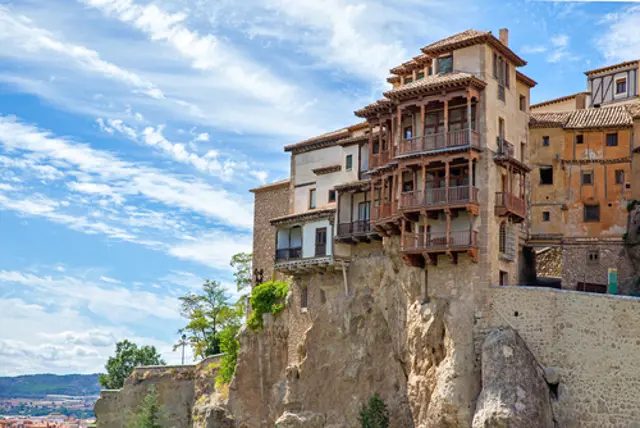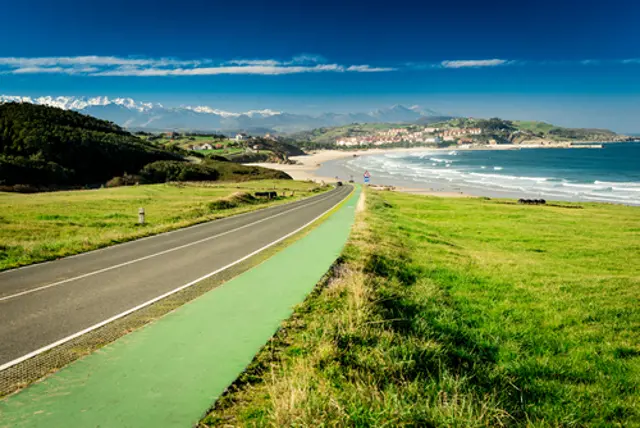11 Spanish cities to visit

Of course, you must have seen Barcelona and Madrid at some point in your life, that goes without saying. But if you have a little more time on your hands, we recommend that you also visit the smaller towns that make Spain the real Spain. These places are as lively and authentic as their big brothers, brimming with tradition, and you'll discover the Spanish art de vivre and joie de vivre in every square. So get off the beaten track and discover a different Spain!
Whether you'd like to visit these cities as a stopover or spend a few nights, you can do both. Are you very adventurous and have been thrifty on vacation? Then consider a road trip with each city as a stopover. Imagine being able to say after your trip that you've discovered the real Spain in all its fragrances, colors and flavors.
From a hilltop village in Majorca to a port town wedged between a boat-filled bay and craggy mountain peaks, here are 11 small towns in Spain that deserve a place on your bucket list!
1. Cudillero, Asturias
This fishing village on the Bay of Biscay stands out from the monotonous towns of the Spanish countryside with its explosion of multicolored pastel hues. Each house has its own identity, creating an enchanting effect. You can easily spend hours drinking a fresh caña or two while enjoying the bustle of the small but active quay. The village is also an ideal starting point for day trips to nearby beaches.
2. Cadaqués, Catalonia
This small town about 30 km from the French border is nestled between a bay full of boats on one side and craggy mountain peaks on the other. Some of the world's most famous artists, including David Hockney, Marcel Duchamp, Henri Matisse, Picasso and former resident Salvador Dalí, lived and worked in Cadaqués, giving the town an artistic spirit that is still perceptible today.
3. Cuenca, Castilla-La Mancha
This beautiful Spanish town, rich in ancient history and a UNESCO World Heritage Site, has adapted over the centuries to its remarkable natural setting atop deep river gorges. One of the most striking results of this unique location are the famous "hanging houses". These multi-storey houses are literally built on the edge of the cliffs, with balconies that seem to float above the abyss. Although these architectural marvels are no longer as numerous as they once were, one of these houses now houses the world-class Museum of Abstract Art.

4. Ronda, Andalusia
Andalusia is famous for its countless pueblos blancos (white towns). What makes Ronda even more special is its location. Set in the mountains on the edge of a 400-metre-high cliff, the views over the valley are breathtaking, and the three bridges spanning the gorge are feats of engineering.

5. Ávila, Castilla y León
Ávila, a town just 70 miles from Madrid, attracts many Catholic pilgrims due to its association with the famous mystic Saint Teresa of Ávila. Known for its well-preserved old town, which even features on UNESCO's World Heritage List, the city is perfect for a day trip thanks to regular rail links from the Spanish capital. However, after seeing the magical way the city walls light up at night, the impressive Gothic cathedral that almost looks like a castle, or after tasting Santa Teresa's yemas - delicious little pastries made with egg yolk - you may well decide to stay here for at least two nights.
6. Zafra, Extremadura
Zafra is nicknamed the "little Seville", and it's easy to see why this nickname is so appropriate: the town shines with its dazzling white houses, Moorish architectural influences visible everywhere in the cobblestones and arches, and an imposing castle in which it's even possible to spend the night. Located in the south of Extremadura, Zafra deserves to be more than just a stopover on the way to neighboring cities such as Cáceres.
7. Albarracín, Aragon
This isolated mountain town, nestled in a rocky valley and embraced by a bend in the Guadalaviar River, is characterized by houses in shades of pink, orange and red. After almost total destruction during the Spanish Civil War, the government chose not to restore the houses and streets in a drab, typical 1950s style. Instead, the restoration paid tribute to the town's medieval roots and its rich history as the former seat (1012 to 1104) of an influential Berber family after Moorish domination of the Iberian Peninsula. The foundations of the castle where the al Banu Razin family once resided have been preserved, and the walls that once protected the ancient Moorish town have been carefully restored over time.
8. San Vicente de la Barquera, Cantabria
San Vicente de la Barquera, with its snow-capped peaks and verdant hills, presents an unexpected picture to those who think of a typical Spanish coastal town. This seaside town may lack palm trees, but it more than makes up for this with its rich history and medieval architecture, as well as its wild, unspoilt beaches. Highlights include the Puente de la Maza, a 15th-century bridge stretching for over a kilometer, and the majestic sand dunes and windswept beaches of the Oyambre Natural Park. Tourism in San Vicente is essentially local, which adds to the area's authentic charm.

9. Combarro, Galicia
In the northwest of Spain lies Galicia, a region that its inhabitants consider special - and they'll be happy to tell you so in Galician. This language, which is closer to Portuguese than to Castilian Spanish, is the mother tongue of most of them. Combarro, a charming coastal village at the mouth of the Ría de Pontevedra, embodies the unique atmosphere of the region, with its unpretentious seafood restaurants serving fresh produce every day, its narrow, winding streets and, above all, its traditional hórreos, stone granaries situated on the water's edge.
10. Peñíscola, Castellón
Like Mont Saint-Michel in France and Castello Aragonese d'Ischia in Italy, Spain also boasts its own architectural marvel: Peñíscola. This fortified town rises spectacularly above the sea off Spain's east coast. Inside the town's fortified walls is a 14th-century castle, originally built by the Knights Templar on the foundations of a Moorish citadel. Once a papal residence, the castle dominates the highest point of the town, offering spectacular views of the Castellón coastline and the Serra d'Irta mountains. After a stroll through the atmospheric streets, where scenes from "Game of Thrones" and other Hollywood series have been filmed, you can relax on the beach directly opposite Peñíscola. From this sandy beach, you'll get a completely different perspective of the walled medieval town.

11. Lekeitio, Basque Country
This fairytale Basque fishing village is dominated by an impressive Gothic basilica, but that's just the start of what you can explore. For the gastronomically adventurous, there are the delicious pintxos that are a must-try. There are also beautiful beaches in the vicinity of the town. On the longer Karraspio beach, low tide offers the unique opportunity to walk - yes, really walk - along a sandbank to the nearby island of San Nicolás. Once there, a walk to the top of this small island offers breathtaking panoramic views of Lekeitio and the rugged Basque coastline.
Fancy a trip to Spain? Ilse will be delighted to help you plan your ideal trip.
